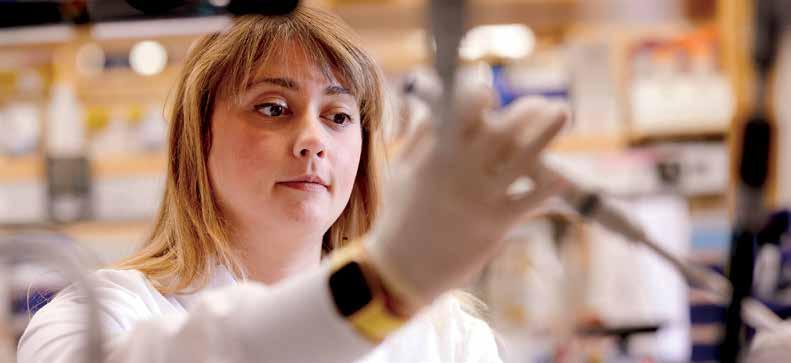
2 minute read
The Quest to Understand the Role of FABP4 Hormone
One of the goals of our research team is to determine the role of hormonal FABP4 in the development of insulin resistance and diabetes, illuminating the molecular signaling pathways that underlie the well-established connection between obesity and metabolic disease. A better understanding of the mechanism of FABP4 action within the endocrine system will provide unique insights into targetable pathways for the development of new therapies against obesity-related diseases.
Despite the importance of counter-regulatory mechanisms to combat starvation and hypoglycemia, a significant component of this adaptive network, adipose tissue, remains understudied. It is functionally and developmentally conceivable that signals must exist to integrate this major source of energy during fasting or starvation to the rest of the counterregulatory network. Our studies demonstrated that fatty acid binding protein 4 (FABP4) is secreted from adipocytes—its circulating levels rise in fasting and in the context of obesity, and the hormone acts on the liver to promote hepatic glucose production. In this way, the high levels of circulating FABP4 that occur in obese animals appear to have an effect reminiscent of the hyperglucagonemia that characterizes the diabetic state. In our other work, now published (Science TM), we did observe an intriguing pattern in mice after exposure to a short chain fatty acid to promote hepatic glucose production that this response was dependent on both FABP4 and glucagon. The objective of this project has been to understand the contribution of circulating FABP4 in mediating hepatic gluconeogenesis (both synthesis and breakdown) and its contribution to the diabetic condition. Our overarching hypothesis is that FABP4 is a critical component of “counter-regulatory” machinery and a mediator of the development of diabetes. We conduct several different types of experiments, including the use of multiple genetic mouse models and biochemical, biophysical, and cell-based assays to dissect the function of circulating FABP4 and its interaction with other relevant partner proteins. The potential of this ongoing work lies in pinpointing a novel mechanism of endocrine regulation—the interaction between an adipokine and a glucoregulatory hormone that links the adipose tissue to counterregulatory mechanisms—and carries important implications for metabolic disease pathogenesis.
Advertisement
Most recently, our efforts to identify potential FABP4 binding partner(s) resulted in the discovery of the Fabkin complex as a novel hormone complex and mechanism of action (details of this manuscript are already provided in this report.) While the action of this complex, named Fabkin, is so far studied in beta cells, the biological spectrum and the mechanism of action through purinergic receptors share many relevant features to the counterregulatory system, particularly liver glucose and lipid metabolism in general. We are now investigating these possibilities using new genetic models, as well as human hepatic organoids with multiple cellular populations. We are also pursuing additional translational tools by mapping the interaction sites of the components of the Fabkin complex and gathering 3D structural information.
We are grateful to the National Institutes of Health USA and Juvenile Diabetes Research Foundation for providing funding and logistic support for these projects.









